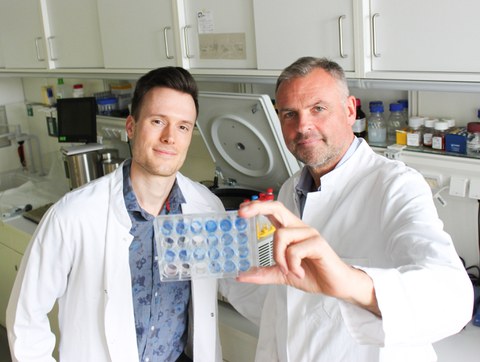Jun 06, 2024
Findings on the treatment of head and neck tumors: New methods to combat resistance to radiotherapy and chemotherapy

Prof. Nils Cordes and his team are investigating the development of mechanisms of cancer cell resistance to radiotherapy and chemotherapy in head and neck tumors
New perspectives in cancer research: A recent scientific study conducted at the National Center for Radiation Research in Oncology – OncoRay has provided advanced insights into the treatment of head and neck squamous cell carcinoma (HNSCC). The results could pave the way for more effective therapies and improve patients' chances of survival.
Until now, treatment methods for head and neck cancer have generally offered a five-year survival rate of around 50 percent, so innovative methods are urgently needed. The present research focuses on gaining a better understanding of the genetic and molecular vulnerabilities of cancer cells with a view to developing new treatments.
The Dresden scientists working with Prof. Nils Cordes at OncoRay (supported by the TUD Dresden University of Technology, Carl Gustav Carus Faculty of Medicine Dresden, Helmholtz-Zentrum Dresden-Rossendorf) were able to show that the blockage of a specific receptor family, known as fibroblast growth factor receptors (FGFR), has the potential of increasing the effectiveness of radiotherapy and chemotherapy. However, pre-clinical studies have shown that this treatment also generates resistance to radiotherapy and chemotherapy.
Through extensive molecular investigations, the researchers discovered that there are two different cell populations: One in which the treatment makes the tumor cells more vulnerable to radiotherapy, and another in which it protects the cells by making them more resistant. This difference is related to a process called epithelial-mesenchymal transition (EMT), which significantly influences the behavior of tumor cells.
“We found that cells that develop resistance to treatment have an EMT status that makes them less sensitive,” explains Prof. Nils Cordes, the lead author of the publication. “But we also found ways to overcome this resistance.”
By combining FGFR blockage with other molecular drugs, the researchers were able to show in pre-clinical studies that it is possible to break through the resistance of tumor cells and make them sensitive to therapy again. These findings were confirmed by extensive bioinformatic gene expression analyses, including data from patient groups, indicating that certain gene expression patterns can be used to predict which patients might benefit from treatment.
“Our study suggests that a targeted therapy that concentrates on the individual characteristics of the tumor could improve the effectiveness of treatment,” says Prof. Nils Cordes. “We hope that our results will contribute to the development of personalized treatment strategies for patients with head and neck tumors.”
However, the researchers emphasized that further laboratory studies are needed to confirm both the safety and efficacy of these treatment approaches and the gene expression patterns. Nevertheless, they firmly believe that their work has made an essential contribution to improving the treatment of head and neck tumors.
Contact:
Prof. Nils Cordes
Tel.: (+49) 351 4587401
Email:
